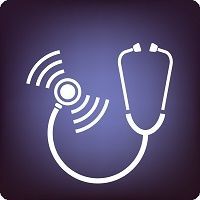Article
Remote Intensive Care Reaping Quality and Cost Benefits
Author(s):
A North Carolina healthcare system uses an Intensive Care Unit "command center" to optimize ICU care at several of its hospitals. The telemedicine system is generating impressive data and efficiencies, but it comes with a significant price tag.

It was 1990 when Bette Midler sang, “From a distance there is harmony, and it echoes through the land.”
Now, 25 years later, the Carolinas HealthCare System is achieving harmony by working from a distance. That is, the healthcare system monitors intensive care units in 10 of its hospitals from a remote location—a command center near Charlotte. The command center, according to Scott Lindblom, MD, director, adult critical care services, and chief of pulmonary and critical care consultants for the Carolinas HealthCare System, serves as an adjunct to support the staff of the various ICUs.
“We realize that to really obtain true 24-7 intensivist ability among all the ICUs there really wasn’t enough intensivists to go around,” Lindblom explains. “And there’s enough body of evidence out there now that suggests that utilization of a tele-ICU program really improves the quality of your care. And you see results that decrease mortality and decrease length of stay.”
Impressive Data
The program, which the healthcare system refers to simply as “virtual critical care,” didn’t just burst onto the scene. Lindblom explains that it was strategically built in stage fashion over an 18-month period to ensure the workforce wasn’t stretched too thin before moving forward.
And the results thus far have been exactly what the healthcare system hoped for.
“We do have reductions in mortality rates,” Lindblom says. “What is really the key is we’re able to get actual risk-adjusted data from this. It’s always hard to tell if you’re making progress, but that’s the real beauty of this program. And one of the things that we’re able to leverage out of this product that we utilize is the risk-adjusted data. So we can compare ourselves across the country.”
In addition, the healthcare system instituted a process it refers to as a new patient evaluation for any patient who gets admitted into the ICU.
“We’ve compared our results for when we do that versus when there is not a new patient evaluation, and we’ve had a significant improvement in mortality when we do it and reduce length of stay,” Lindblom says. “So we pretty much have been able to mimic the results of the studies published in the JAMA about a year and a half ago that show this is a successful solution.”
Return on Investment
Lindblom says that, if well thought out, there are several financial benefits to setting up these tele-ICUs. The first stems from improving quality. By avoiding complications and taking better care of patients, overall costs come down. And reducing length of stay through this vigorous 24-7 process also brings about significant cost reductions.
And, Lindblom adds, establishing the tele-ICUs has enabled the healthcare system to operationalize things a little more effectively.
“You can start targeting different things people do as routine and start to eliminate some of those, such as use of some IV medications or eliminating daily labs and chest x-rays when they’re not necessary,” Lindblom explains. “Getting rid of expensive medication solutions that are not necessary but have historically been done by certain physicians over time. Appropriately using ventilator strategies so you can make the ventilator decrease the cost.”
In addition, Lindblom points out that the healthcare system hasn’t had to hire 20 more ICU doctors to be at the various facilities around the clock, which brings about staffing benefits.
“If you just standardize the operations, which you can do from a central location using this tool, you can have very rapid process improvement.”
Communication and Pitfalls
Communication is key in all aspects of medicine, and Lindblom believes that working from a centralized platform actually augments communication by almost forcing the conversation. That includes handoffs and check-offs from the bedside team to the virtual team.
“There are all these little checkpoints we’ve put in place to really augment communication,” Lindblom says. “Because I believe that compared to when I was practicing 20 years ago in the hospital, I don’t think we communicate as effectively today as we used to. And this has been one of our big pushes. We really want to build it so that our ICU units are communicating well as a team.”
And that includes using tele-ICU appropriately.
“It’s a tool,” Lindblom says. “Just like any hammer can be misused, [tele-ICU] could be ineffective or potentially damaging in some ways.”
It’s also an expensive tool, he points out, so due diligence is critical. That means taking the time to work out the communication mechanism and effectively integrating with the facility staff to develop important relationships. It also means getting creative about integrating the electronic medical record and radiology files, and using the data for process improvement.
“We have taken that very seriously,” Lindblom says. “If we’re going to utilize this we want to get the most out of it. And I think we are.”




